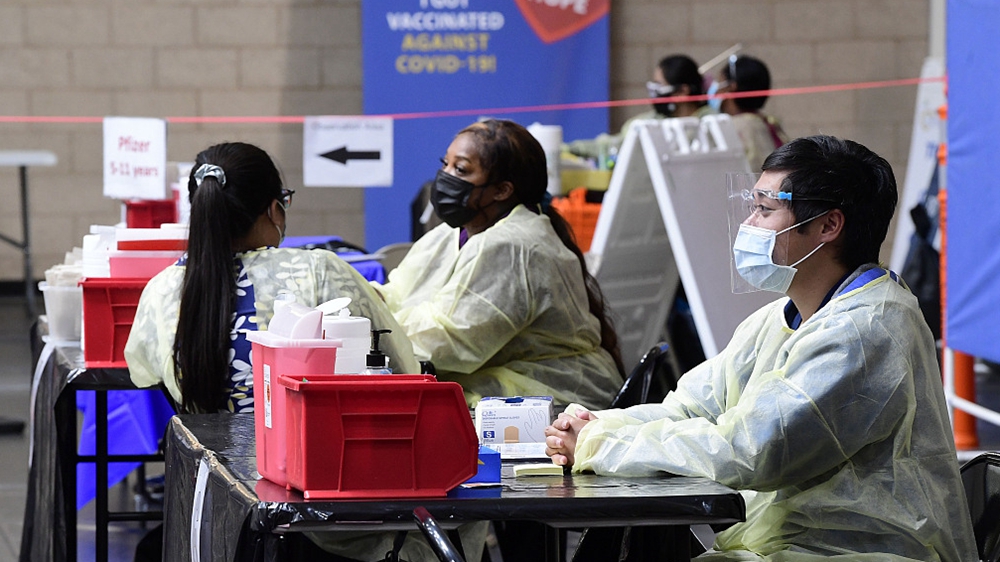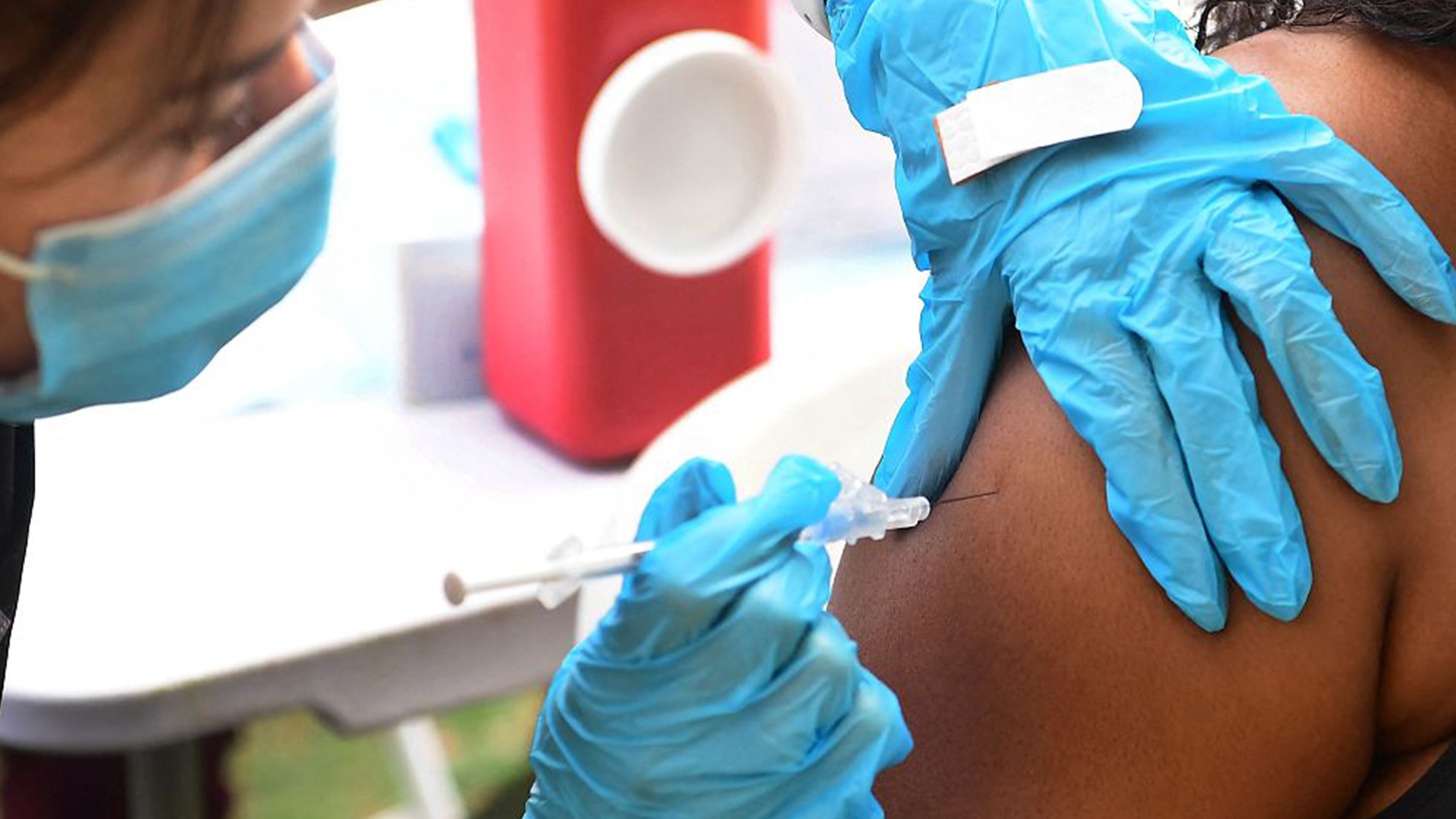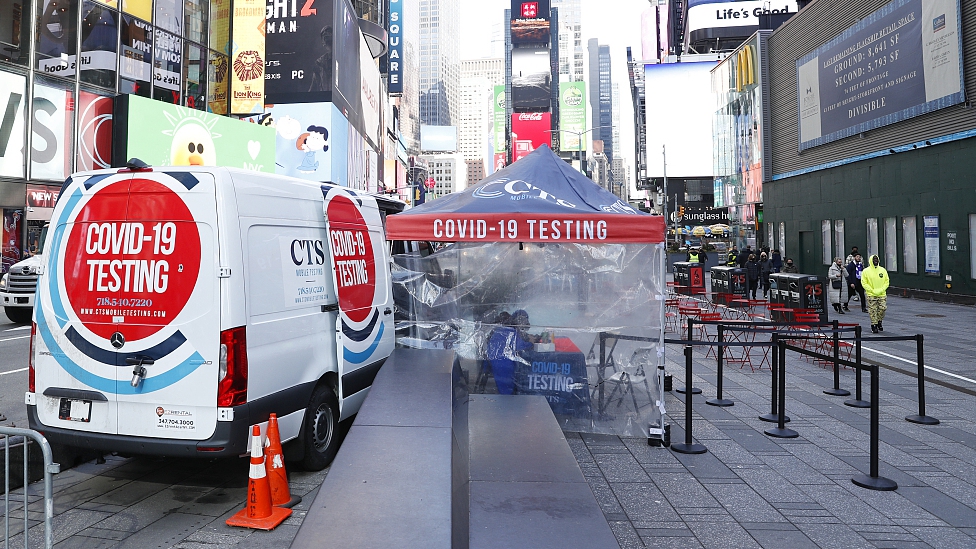
Nurses wait for COVID-19 vaccination patients to arrive at the Jessie Turner Health and Fitness in Fontana, U.S., March 22, 2022. /CFP
Nurses wait for COVID-19 vaccination patients to arrive at the Jessie Turner Health and Fitness in Fontana, U.S., March 22, 2022. /CFP
The number of COVID-19 cases in the United States surpassed 80 million on Tuesday, according to the Center for Systems Science and Engineering at Johns Hopkins University.
U.S. COVID-19 case count rose to 80,000,546, with a total of 978,102 deaths, as of 12:20 p.m. local time (1620 GMT), it said.
The United States remains the nation worst hit by the pandemic, with the world's most cases and deaths, accounting for nearly 17 percent of the global caseload and nearly 16 percent of the global deaths.
California topped the state-level caseload list with more than 9 million cases. Texas confirmed the second most cases of about 6.7 million, followed by Florida with more than 5.8 million and New York with more than 4.9 million.
U.S. COVID-19 caseload reached 50 million on December 13, 2021, crossed 60 million on January 9, 2022, and exceeded 70 million on January 21.
01:43

Omicron subvariant proves highly contagious
Omicron subvariant BA.2 is now the dominant strain of the coronavirus in the U.S., causing almost 55 percent of all new infections last week, showed the latest data from the U.S. Centers for Disease Control and Prevention (CDC).
Top American infectious diseases expert Anthony Fauci recently said that he expected "an uptick in cases" due to BA.2 in the U.S., where states and cities have moved to lift restrictions, and that the Omicron subvariant is about 50 to 60 percent more transmissible than the first Omicron strain.
Second booster approved for the elderly
U.S. health officials on Tuesday authorized a second COVID-19 booster dose of the two most commonly used COVID-19 vaccines for people aged 50 and above, citing data showing waning immunity and the risks posed by Omicron variants of the virus.
The U.S. Food and Drug Administration agency said the new boosters – a fourth round of shots for most vaccine recipients of the Pfizer-BioNTech or the Moderna COVID-19 vaccines – are to be administered at least four months after the previous dose. They are intended to offer more protection against severe disease and hospitalization.
Besides, the country is still struggling with a low vaccination rate. The number of COVID-19 vaccinations per day in the world's richest developed country has fallen to the lowest level since the early days of the campaign in 2020, and the seven-day average of vaccine doses of all types given in the country fell to 127,000 per day this week, which marks a steady decline since January, when more than 1 million shots per day were being administered, The Hill reported on Friday.
Meanwhile, U.S. CDC data showed about half of the eligible U.S. population still has not received a booster dose.

A mobile COVID-19 testing vehicle parked in Times Square, New York, U.S., February 8, 2022. /CFP
A mobile COVID-19 testing vehicle parked in Times Square, New York, U.S., February 8, 2022. /CFP
'Running out of funds' to fight virus
"The federal government is running out of funds to provide Americans, especially those who are uninsured, with COVID-19 vaccines, tests and treatments," said an op-ed co-authored by U.S. Surgeon General Vivek Murthy and David Kessler, chief science officer for the U.S. COVID-19 Response Team.
"If the funding does not materialize, we will find ourselves in a far weaker position, struggling to keep up with a constantly evolving virus that will continue to threaten our health, our economy, and our peace of mind," they wrote in the piece published by The New York Times (NYT).
In addition, the federal government last week cut shipments of lifesaving monoclonal antibodies to states by 35 percent – and officials anticipate running out of monoclonal antibodies later this spring.
"We will not be able to continue making home tests available, and the critical surveillance efforts that help us anticipate new waves and variants will be compromised," Murthy and Kessler said. "We cannot wait for another crisis for Congress to make sustained pandemic response funding available."
In an article earlier this year, NYT opinion columnist Farhad Manjoo argued that the level of U.S. military spending, reportedly accounting for nearly 40 percent of the world's defense expenditures, "has long been excessive."
"After a pandemic that has claimed the lives of more Americans than any war we fought, continuing to throw money at the military is an act of willful disregard for the most urgent threats we face," Manjoo said.
Read more:
Study finds racial, economic disparities in COVID-19 testing at U.S. homes
(With input from agencies)

